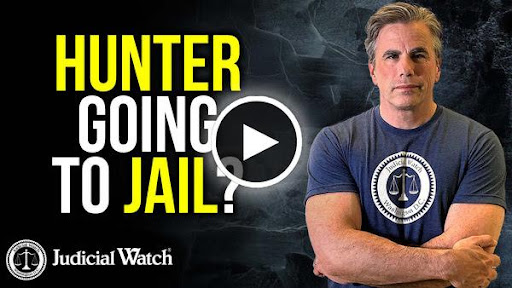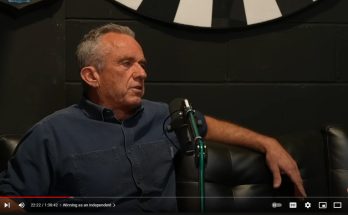
Judicial Watch

We filed a Freedom of Information Act (FOIA) suit against three federal agencies for details of the Biden agencies’ decision to expand asset protection to large depositors in the Silicon Valley and Signature Bank government takeovers (Judicial Watch Inc. v. U.S. Department of the Treasury, et al.(No. 1:23-cv-01174)).
The fact that the responsible Biden officials are hiding documents about the issue suggests that they have something to hide.
We sued in the U.S. District Court for the District of Columbia against the U.S. Department of the Treasury, the Federal Deposit Insurance Corporation and the Board of Governors of the Federal Reserve System after the agencies failed to respond to March 13 and 14, 2023, FOIA requests for:
- All records relating to the systemic risk exception granted to Silicon Valley Bank. Such records include minutes, memoranda, and any communications between the [agency] and employees and/or representatives of Silicon Valley Bank.
- All records concerning the systemic risk exception granted to Signature Bank. Such records include minutes, memoranda, and any communications between the [agency] and employees and/or representatives of Signature Bank.
Silicon Valley Bank in Santa Clara, CA, failed on March 10, 2023, and Signature Bank in New York City failed two days later. On March 12 the Fed, FDIC, and Treasury Department, with the approval of President Biden, announced that a “systemic risk exception” was being invoked for both banks. This, they claimed, would fully protect all depositors.
The FDIC’s standard deposit insurance coverage limit is $250,000 per depositor, per FDIC-insured bank, per ownership category. A systemic risk exception allows the FDIC, after multiple agency reviews, to protect uninsured depositors over the $250,000 insured limit.
The Hill reported that midsize banks are lobbying federal officials to guarantee all bank deposits over the next two years and that small, community banks “have spoken out against paying more to cover the failure of larger banks such as SVB.” The article points out that “only around 10 percent of deposits in community banks are over the $250,000 limit, compared to roughly 90 percent for Silicon Valley Bank,” according to Cam Fine, former CEO of the Independent Community Bankers of America.
Fortune reported that the FDIC listed large companies that were “in no real danger” of failure that it bailed out in the wake of the Silicon Valley Bank collapse:
The $1 billion that Sequoia, the firm famous for backing iconic companies including Apple, Google and WhatsApp, had at SVB made up a fraction of its $85 billion assets under management.
Kanzhun, which had $902.9 million in deposits with SVB … was heavily backed by Chinese giant Tencent before it went public on the Nasdaq in 2021, was among the largest Chinese companies to IPO in the US that year.
Sen. J.D. Vance (R-Ohio) said during a hearing of the Senate Banking Committee. “I think, you know, had had [sic] deposits of over $3 billion, and I think Roku had deposits of over $500 million, but there are a lot of people, a lot of firms in Silicon Valley Bank that had deposits well over $1 million, over $5 million.”
Governor Gavin Newsom (D-CA) reportedly lobbied for the bailout “after the failed bank began lobbying California’s government and donating to Newsom’s wife.” Nancy Pelosi and other Democrats were lobbied for the bailout. Silicon Valley was also a major supporter of President Biden in the 2020 election.
The bank’s board reportedly had many Democratic Party ties, including “a Hillary Clinton mega-donor” as well as someone who “worked for President Barack Obama before her own political career spectacularly failed.” A third was a “prolific contributor to Democrats, including Nancy Pelosi — who owns a Napa Valley vineyard just 15 minutes” away.
We have been instrumental in uncovering previous bank bailout information.
In February 2011, we obtained FDIC records through a FOIA lawsuit filed on behalf of former Federal Reserve and FDIC employee Vern McKinley that pertained to the Citigroup and Bank of America bailouts, as well as documents detailing the FDIC’s Temporary Liquidity Guarantee Program, which guaranteed unsecured debt of private financial institutions and provided them “full coverage of non-interest bearing [sic] deposit transaction accounts, regardless of dollar amount.” Included were unredacted minutes from FDIC Board meetings during which FDIC officials and staff discussed the rationale for the bailouts which centered on the “systemic risk” of allowing the two financial institutions to fail.
In October 2011, we petitioned the U.S. Supreme Court, asking for a review of a lower court ruling validating the Federal Reserve’s decision to withhold documents about its $29 billion bailout of Bear Stearns.
In April 2012, McKinley and I co-authored an op-ed in The Washington Times titled “Bernanke’s Fairy Tale Recession Story for Kids; Records Show Fed Had No Coherent Strategy for Bank Bailouts,” which stated in part:
It’s an oldie but a goodie for our Federal Reserve chairman. In one of his recent lectures at George Washington University (GWU), Ben S. Bernanke made the self-congratulatory assertion that the “forceful policy response” led by the Federal Reserve in 2008 helped avoid a more serious economic downturn.
This rhetoric is nothing new. Mr. Bernanke has made similar remarks in the past. As he confided in one interview, “I was not going to be the Federal Reserve chairman who presided over the second Great Depression.” It is clear that like Treasury Secretary Timothy F. Geithner, who recently trumpeted the fourth anniversary of his role in the Bear Stearns bailout, Mr. Bernanke is aggressively using the GWU lectures to shape his legacy before he steps down.





